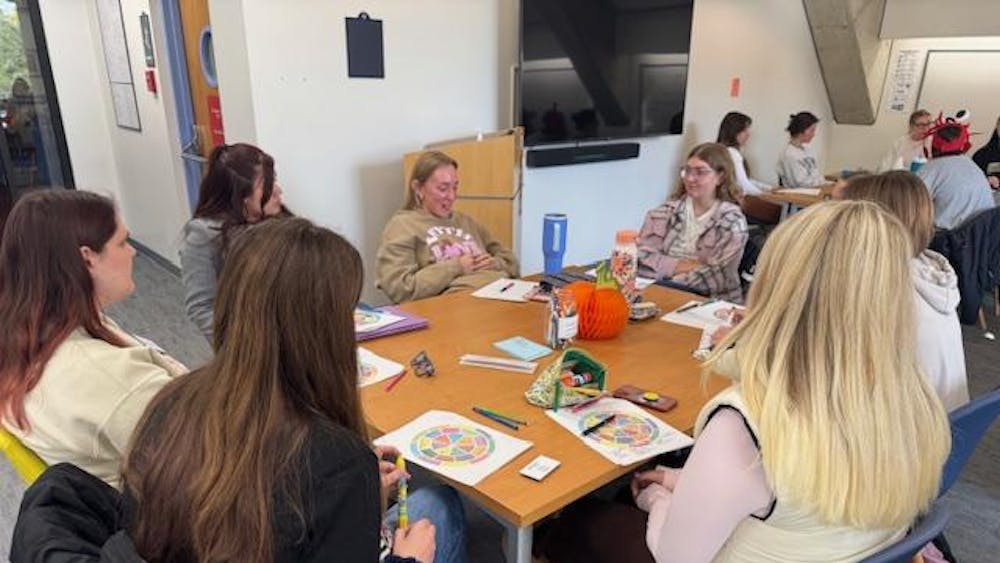Silhouetted against the image of Martin Luther King Jr. on the cover of last year’s Time Magazine, photojournalist Dan Budnik took the stage at Annenberg Auditorium last night to share his experiences as a civil rights photographer and insights behind some of the movement's most famous moments during a lecture titled "Marching to the Freedom Dream."
The talk was co-sponsored by the Snite Museum of Art, the department of art, art history and design, the history department, the American Studies department, the Africana Studies department and the Center for Civil and Human Rights.
Budnik presented snapshots from the march on Washington, the Youth March for Integrated Schools and the Selma to Montgomery march, featuring renowned civil rights leaders such as King, Marlon Brando, Malcolm X, Ralph Abernathy and Harry Belafonte.
“In the whole civil rights movement I was right there, like a fly on the wall," Budnik said. "It was quite amazing."
Budnik, who was born in 1933, got his start with Magnum Photos in New York in 1957, after being drafted into the military and photographing at the New York School of Abstracts Expressionist and Pop Artists, according to his personal website.
The next year, Budnik shot one of his more famous collections at the Youth March for Integrated Schools.
“The Youth March for Integrated Schools was really the prototype to the march on Washington,” Budnik said.
Budnik said the photos from the march on Washington helped him gain backstage access to speeches and famous civil rights leaders. His ability to get in the action got him the recognition of Life Magazine, Time Magazine, Vogue and Sports Illustrated for his coverage of the civil rights movement.
All of Budnik’s images from the three marches came with a story. Budnik said he made it his mission to know the names of the people in each of his photos, sometimes making complete trips just to find them.
“This young lady in the middle is Crutilla Harold,” Budnik said, referring to a young black girl at a protest in Selma. “I ended up going back [to Selma] because I wanted to identify as many people as possible, so I had an exhibit up for a couple weeks and people said, ‘Oh that’s Crutilla.’”
Budnik said he built up relationships with civil rights leaders, especially King, who can be seen in many of his photographs. He had access to King’s personal group, catching intimate shots between King and his friends, colleagues and family. One image in particular of King and his wife, Coretta Scott King, was a personal favorite of Budnik because he said it showed King’s intimate side.
“Martin Luther King Jr. was always with the group, I noticed,” Budnik said. “But he was a loner, always alone.”
Last year, Budnik's photo of King in this typical solitary state was placed on the cover of Time Magazine as part of a commemoration of the 50th anniversary of the march on Washington and “I Have a Dream” speech.
“This was the pay off picture,” Budnik said. “But I like these kinds of photos the most. They have their own longevity.”
Read More
Trending









